#kágaba
Photo


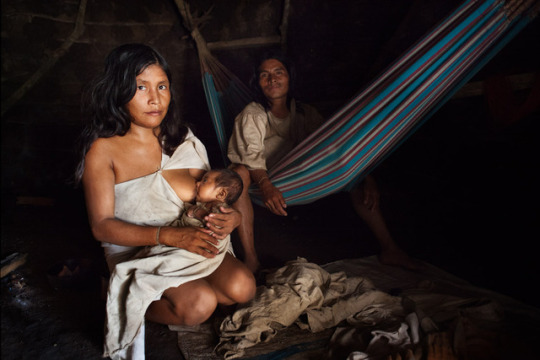


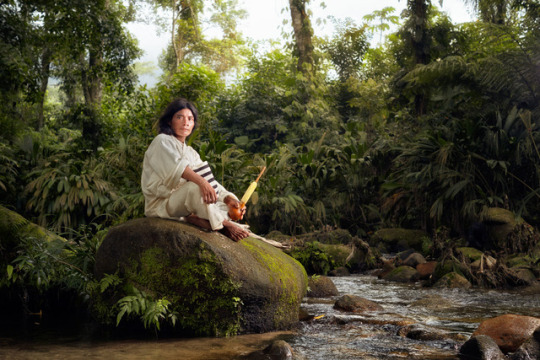
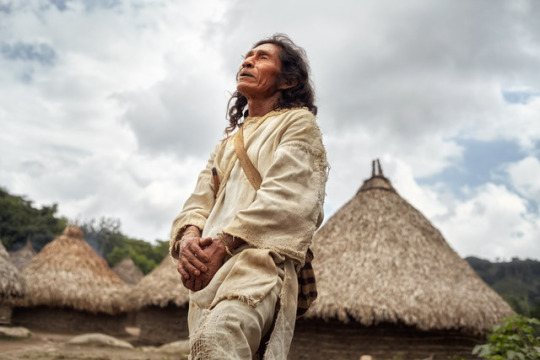


Kogi: The Indigenous people of the Colombian desert
The Kogis are one of the few indigenous people in South America who were able to maintain their pre-Columbian culture. Being a pacifistic ethnic group they never attempted to fight colonists and preferred to move to more isolated areas up the mountain, where they could continue to live their lives without much influence from western culture. They call themselves the “elder brothers” who are taking care of the “Heart of the World” (the Sierra Nevada) and protecting it from the “younger brothers” (non Kogi or Arhuaco Amerindians) who are destroying it. They believe if the “Heart of the World” get's out of balance it will affect the whole world. Having survived the Spanish colonizers, the [Colombian] colonials in the beginning of the century, the Marijuana bonanza of the 80s, the coca planting of the drug cartels and the armed conflict among guerillas and paramilitaries the Kogi are facing their biggest fear now, the destruction of “Heart of the World” due climatic changes.
- Alexander Rieser
#photography#photojournalism#indigenous#native american#indigenous people#kogi#cogui#kágaba#indígena#indígenas#pueblos indígenas
81 notes
·
View notes
Text
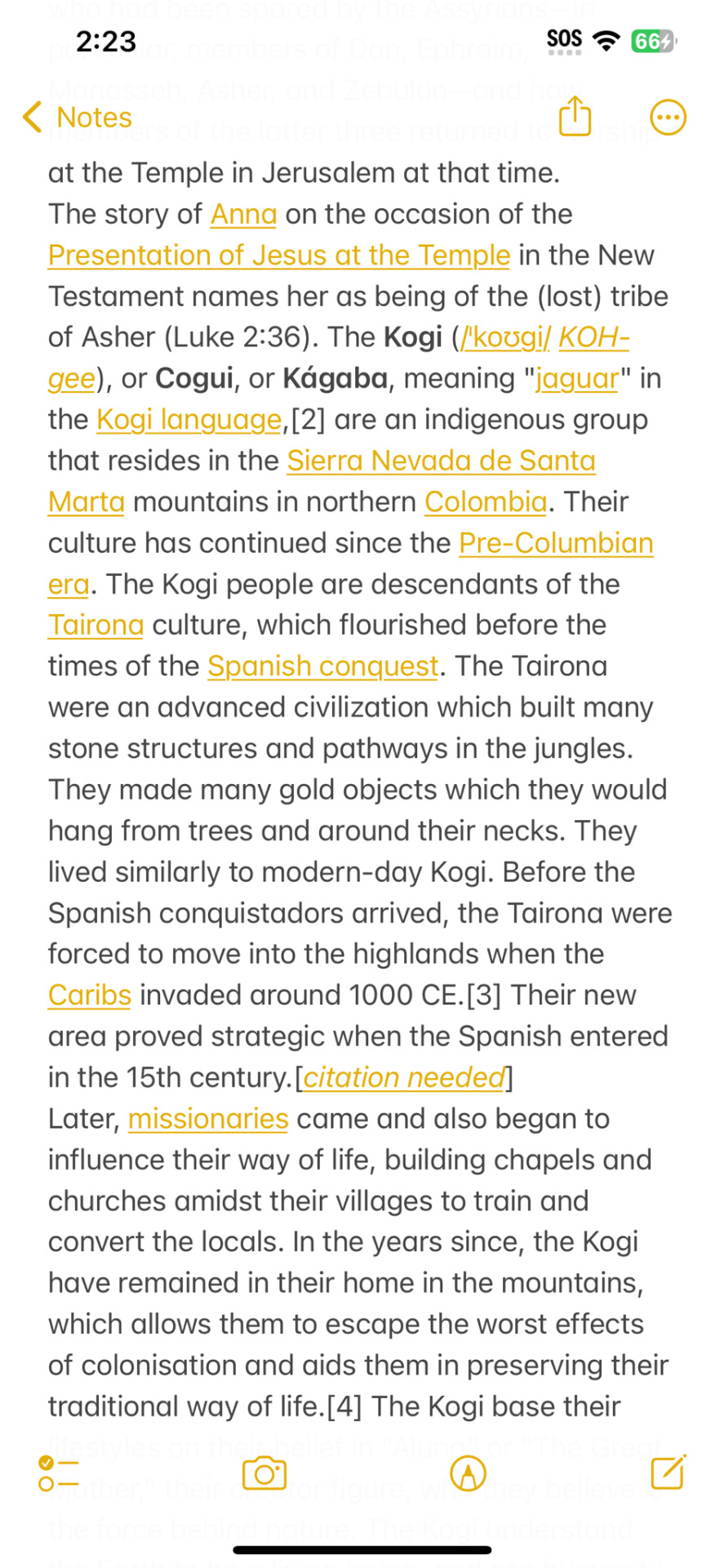
at the Temple in Jerusalem at that time.
The story of Anna on the occasion of the Presentation of Jesus at the Temple in the New Testament names her as being of the (lost) tribe of Asher (Luke 2:36). The Kogi (/kougi/ KH-gee), or Cogui, or Kágaba, meaning "jaguar" in the Kogi language, [2] are an indigenous group that resides in the Sierra Nevada de Santa Marta mountains in northern Colombia. Their culture has continued since the Pre-Columbian era. The Kogi people are descendants of the Tairona culture, which flourished before the times of the Spanish conquest. The Tairona were an advanced civilization which built many stone structures and pathways in the jungles.
They made many gold objects which they would hang from trees and around their necks. They lived similarly to modern-day Kogi. Before the Spanish conquistadors arrived, the Tairona were forced to move into the highlands when the Caribs invaded around 1000 CE. [3] Their new area proved strategic when the Spanish entered in the 15th century. [citation needed]
Later, missionaries came and also began to influence their way of life, building chapels and churches amidst their villages to train and convert the locals. In the years since, the Kogi have remained in their home in the mountains, which allows them to escape the worst effects of colonisation and aids them in preserving their traditional way of life. [4] The Kogi base theirs CLONES
1 note
·
View note
Text
Maybe We'll Be Butterflies - STORY/AUTHOR NOTES - for chapter 1
I figured I should go ahead and make a post with a few notes that might be lost on the reader at first glance. I kinda strive/go a little overboard with detail and research, so it can get confusing. Regardless, I'm happy to talk a little at length to help some things in perspective so you can follow along.
Costeño/a - term for a person that lives or hails from the coastal/Caribbean region of Colombia. Usually, they are of majority or partial African descent and it's sometimes used to just describe an Afro-Colombian person. Not a slur.
Casta - the Spanish/Portuguese word for 'lineage'. Was often used to describe the now defunct, hierarchical, race based caste system of the colonial era. Basically, a term and descriptor of someone's ethnicity or race.
Mestizo - a racial classification in Latin American countries of an individual who is of European (usually Spanish) and Native/Indigenous American descent. I personally headcanon the Madrigals, excluding Pepa's husband and children - to be Mestizo.
Mejorar la raza - translates to "bettering the race", also known as Blanqueamiento. To quote Wikipedia - "[it is] a social, political, and economic practice used in many post-colonial countries in the Americas and Oceania to "improve the race" (mejorar la raza)[1] towards a supposed ideal of whiteness." also, "Biologically, blanqueamiento is the process of whitening by marrying a lighter-skinned individual to produce lighter-skinned offspring."
Kogis & Páez - Only two of the many major indigenous groups/peoples of Colombia. They have been stewards of the lands of what's called Colombia in the current era for centuries. The Kogis people are also known as the Cogui, or Kágaba - which translates to 'jaguar' in the Kogi language. The Páez people are known for their textile work and are agriculturists.
Departamento del Chocó or the Chocó Department - A department of Western Colombia on its coastline where a majority of it's black/African descendant population resides/hails from. I headcanon Félix and his side of the family as being from there.
òrìṣà/Orixa/Orixás/Orisha - Originally from the Yoruba tradition of West Africa, in particular, Nigeria - this is the term for the spirits/gods/goddesses that act as intermediaries between humanity and the divine being - Olodumare. Due to the trans-Atlantic Slave Trade having a large amount of Yoruba speaking people being enslaved/sold and sent to the Americas, which include Colombia & Venezuela, the Yoruba (as well as many other enslaved ethnic groups) took their beliefs with them and even created newer, sometimes, syncretic faiths.
Magüi (MA-GWEE) - Is the shortened form of the given name 'Magdalena'.
Magüi, Úrsula, and Remédios are OCs. They are not canon.
1 note
·
View note
Text
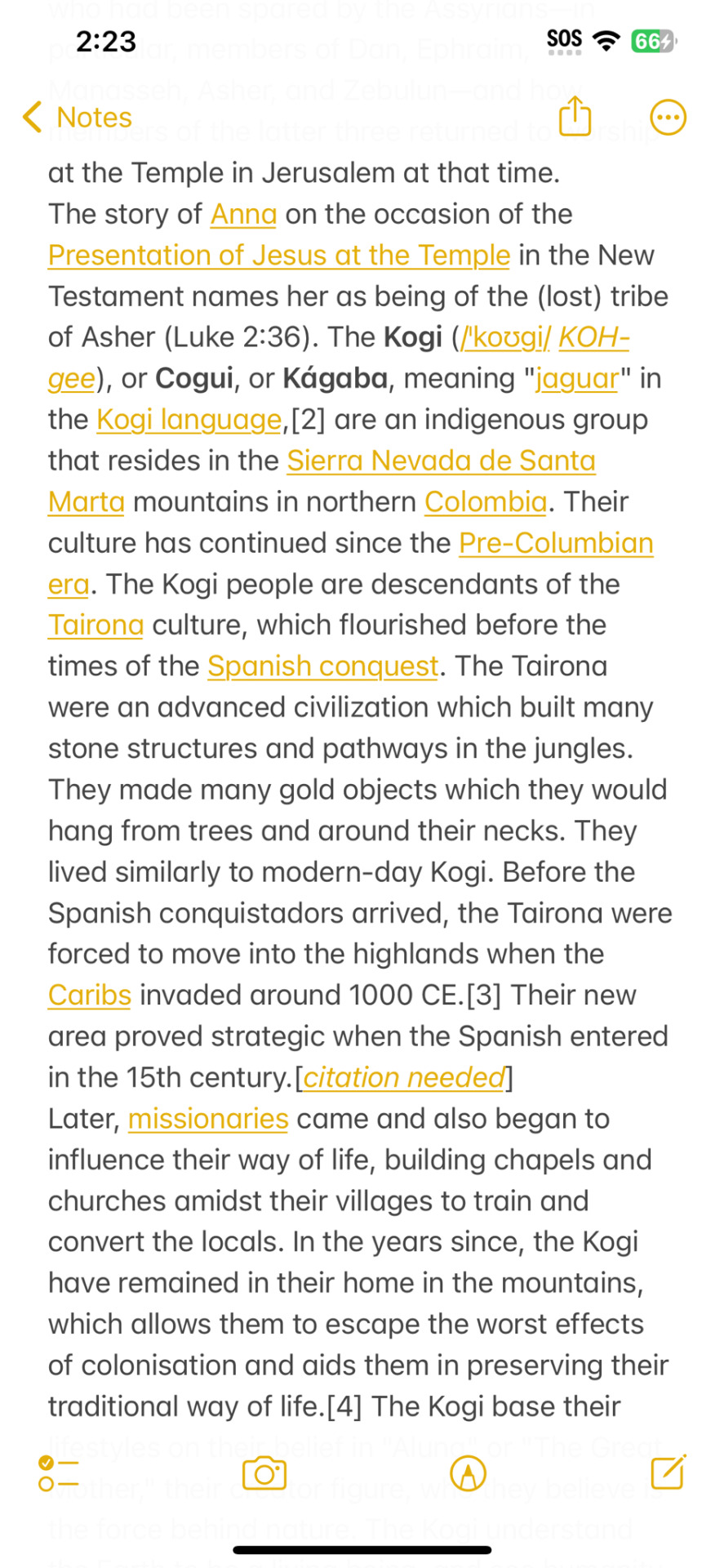
at the Temple in Jerusalem at that time.
The story of Anna on the occasion of the Presentation of Jesus at the Temple in the New Testament names her as being of the (lost) tribe of Asher (Luke 2:36). The Kogi (/kougi/ KH-gee), or Cogui, or Kágaba, meaning "jaguar" in the Kogi language, [2] are an indigenous group that resides in the Sierra Nevada de Santa Marta mountains in northern Colombia. Their culture has continued since the Pre-Columbian era. The Kogi people are descendants of the Tairona culture, which flourished before the times of the Spanish conquest. The Tairona were an advanced civilization which built many stone structures and pathways in the jungles.
They made many gold objects which they would hang from trees and around their necks. They lived similarly to modern-day Kogi. Before the Spanish conquistadors arrived, the Tairona were forced to move into the highlands when the Caribs invaded around 1000 CE. [3] Their new area proved strategic when the Spanish entered in the 15th century. [citation needed]
Later, missionaries came and also began to influence their way of life, building chapels and churches amidst their villages to train and convert the locals. In the years since, the Kogi have remained in their home in the mountains, which allows them to escape the worst effects of colonisation and aids them in preserving their traditional way of life. [4] The Kogi base theirs AND
1 note
·
View note
Text

at the Temple in Jerusalem at that time.
The story of Anna on the occasion of the Presentation of Jesus at the Temple in the New Testament names her as being of the (lost) tribe of Asher (Luke 2:36). The Kogi (/kougi/ KH-gee), or Cogui, or Kágaba, meaning "jaguar" in the Kogi language, [2] are an indigenous group that resides in the Sierra Nevada de Santa Marta mountains in northern Colombia. Their culture has continued since the Pre-Columbian era. The Kogi people are descendants of the Tairona culture, which flourished before the times of the Spanish conquest. The Tairona were an advanced civilization which built many stone structures and pathways in the jungles.
They made many gold objects which they would hang from trees and around their necks. They lived similarly to modern-day Kogi. Before the Spanish conquistadors arrived, the Tairona were forced to move into the highlands when the Caribs invaded around 1000 CE. [3] Their new area proved strategic when the Spanish entered in the 15th century. [citation needed]
Later, missionaries came and also began to influence their way of life, building chapels and churches amidst their villages to train and convert the locals. In the years since, the Kogi have remained in their home in the mountains, which allows them to escape the worst effects of colonisation and aids them in preserving their traditional way of life. [4] The Kogi base their CLONES
1 note
·
View note
Text

at the Temple in Jerusalem at that time.
The story of Anna on the occasion of the Presentation of Jesus at the Temple in the New Testament names her as being of the (lost) tribe of Asher (Luke 2:36). The Kogi (/kougi/ KH-gee), or Cogui, or Kágaba, meaning "jaguar" in the Kogi language, [2] are an indigenous group that resides in the Sierra Nevada de Santa Marta mountains in northern Colombia. Their culture has continued since the Pre-Columbian era. The Kogi people are descendants of the Tairona culture, which flourished before the times of the Spanish conquest. The Tairona were an advanced civilization which built many stone structures and pathways in the jungles.
They made many gold objects which they would hang from trees and around their necks. They lived similarly to modern-day Kogi. Before the Spanish conquistadors arrived, the Tairona were forced to move into the highlands when the Caribs invaded around 1000 CE. [3] Their new area proved strategic when the Spanish entered in the 15th century. [citation needed]
Later, missionaries came and also began to influence their way of life, building chapels and churches amidst their villages to train and convert the locals. In the years since, the Kogi have remained in their home in the mountains, which allows them to escape the worst effects of colonisation and aids them in preserving their traditional way of life. [4] The Kogi base their AND
1 note
·
View note